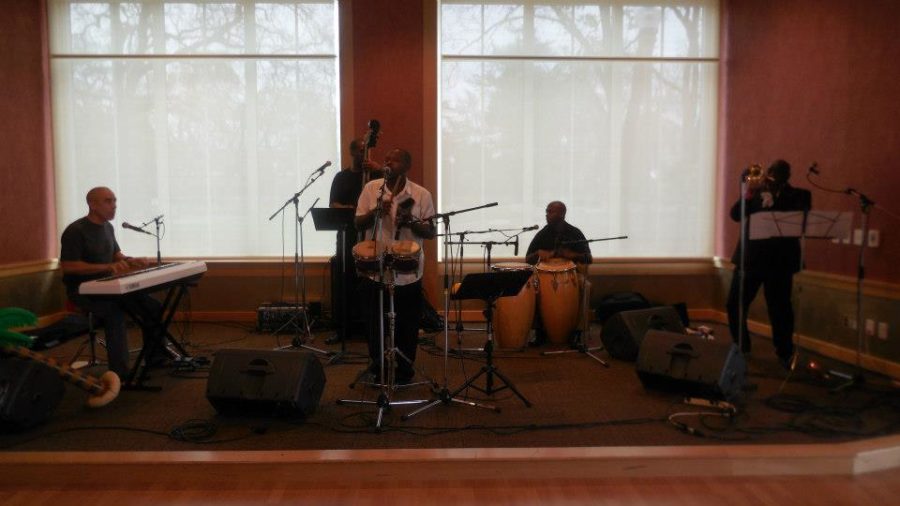Toe-tapping, hip-swaying, wall-shaking Cuban jazz rocked the Bertolini Student Activities Center at 8:30 p.m. March 30 at the Santa Rosa Junior College campus. Carlitos Medrano y el Sabor de mi Cuba took the stage and took the crowd on a blazing journey through the island’s musical history.
Vilona Sample and Michael Gross sashayed forward less than a dozen notes into the first song (Medrano’s own composition “Sabor de mi Cuba”) and the rest of the audience jumped up to fill the dance floor a moment later.
The original number led to six more, plus nine covers and traditional tunes over the two-hour show, running the gamut from danzón and salsa to timba and cha-cha-cha.
Lead vocalist Niobel Sintra led the band (and sometimes the audience) in call-and-response verses over Antonio Cortada’s solid bass, the swirling keyboard of Julio DeLa Cruz and Medrano’s driving congas, all punctuated by “El Niche” Romero’s singing trumpet.
Medrano formed El Sabor de Mi Cuba to provide a fresh perspective on contemporary Cuban music.
“That’s the main idea for Sabor de Mi Cuba,” said Havana-born Medrano. “I do all the rhythms that I know and try to put it together with a strong horn section, I really love that, and syncopated percussion. I’m trying to get all rhythms and give them a new view, new harmonies and new sounds.”
Medrano studied with Cuban percussion greats such as “Changuito” (José Luis Quintana), Eliel Lazo Linares and Ignacio Jarabe Martinez. He regrets that most Afro-Cuban jazz today fails to include styles like mozambique and guijira, as well as the traditional son montuno and batumbata structures.
“As a composer, I have to find how to bring those rhythms back to the present,” Medrano said. “That is my mission.”
Audience members agreed the show more than fulfilled that goal, as they bopped and bumped along to the music.
Gilberto Hernandez and Carol Baginski drove three hours to attend the show.
“We’ve been listening to this great music a long time,” Hernandez said. “I can’t believe more people don’t know about it.”
Baginski agreed. “The music is so rich, with components of jazz, African and Spanish,” she said.
In the show’s second half, Santiago Sandoval dashed up to request his favorite song, “Carnaval” by the renowned Cuban composer Celia Cruz. The band swung right into the combined cumbia/son, to everyone’s delight.
On “La Habana,” Medrano clapped over his head to mark the salsa/timba beat, and his eager fans gladly followed suit. Sintra rattled off various Latin American countries between the lyrics of “Ni Osorbo Ni Ire,” as dancers hollered replies when he named their homelands. When Romero’s huge lungs slowly drew out the opening note for “Mi Tumbao,” the crowd roared approval upon his finish and the band ploughed into the son montuno.
Medrano said they could play the same tune every day, yet never the same way twice.
“When I’m playing I feel the energy, I feel the music, I feel the passion,” Medrano said. “It makes me fly.”


